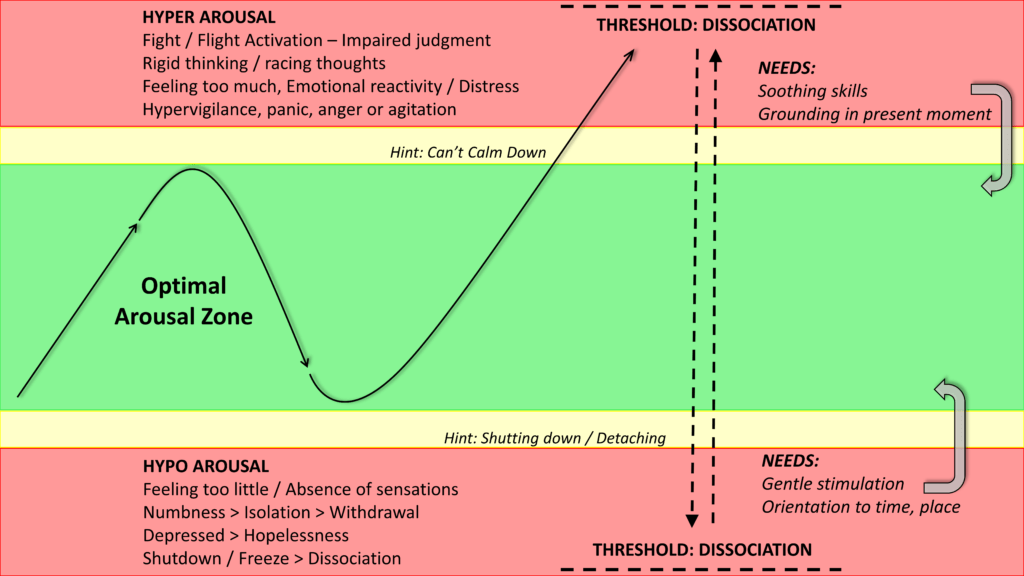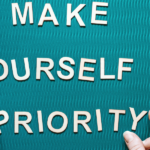Have you ever experienced those moments when something that seems harmless, like a sight, sound, or situation, starts painful memories and emotions? We call these emotional activations, and they are often unexpected, subtle, and, unfortunately, a common occurrence for many individuals who are in the process of healing from trauma.
We’re here to chat about it. So grab a virtual seat, and let’s dive into the world of emotional activations with understanding and empathy.
In this cozy corner of the internet, we’re exploring the ins and outs of those activations, learning how to give them a nod, a wink, and maybe even a farewell hug. Together, we’ll navigate this emotional terrain with a sprinkle of real talk and a generous dose of the ever-supportive trauma-informed approach.
So, stick around if you’ve ever felt emotional activations are the uninvited guests at your healing party. We’re about to turn these gatecrashers into unexpected allies on your path to emotional well-being.
The Importance of a Trauma-Informed Approach:
Now, let’s unpack what Trauma-Informed Care means, especially in disaster response.
In the aftermath of a disaster, whether it’s a natural calamity or a personal crisis, Trauma-Informed Care is the guiding light. It’s about recognizing and responding to survivors in ways sensitive to their emotional, physical, and psychological state. Imagine it as a language of care that speaks directly to what you need.
Here’s where the concept of the Window of Tolerance, coined by the insightful Dr. Dan Siegel, becomes our compass. Simply put, it’s the zone where we can manage stress and function effectively. But, hey, life is unpredictable, and sometimes we find ourselves either hyper-aroused or hypo-aroused outside this window.
So, why is this important? Recognizing where you are in this window becomes a superpower in navigating emotional activations. It’s like having a compass that tells you, “Okay, here’s where you are, and here’s what you can do to find your way back to a place of balance.”
In the following paragraphs, we’ll intertwine Trauma-Informed Care and the Window of Tolerance, making them relatable companions on this journey of emotional well-being after a disaster. Think of it as your personalized guide—for healing and thriving.
Ready to dive into this transformative duo? Let’s go.

Recognizing and Acknowledging Emotional Activations:
Let’s zoom in a bit. We’ve talked about emotional activations, and now we’re equipped with our Trauma-Informed Care roadmap and the Window of Tolerance as our compass. But how does this all play out in the real world?
Picture this: You’re going about your day, and suddenly, something starts an emotional activation. It could be a news report, a loud noise, or even a scent that throws you off-kilter. This is where your newfound knowledge steps in.
1. Recognizing Activation Signs:
Take a moment to pause and notice what’s happening. Are you feeling overwhelmed, anxious, or perhaps numb? Recognizing these signs is like reading the emotional roadmap – acknowledging where you are.
2. Applying Self-Care through a Trauma Informed Lens:
Now, here’s where Trauma-Informed Care strides in. It’s about creating a safe space for yourself. It could be finding a quiet corner or contacting a trusted friend. It’s permitting yourself to say, “This is tough, and that’s okay.”
3. Window of Tolerance Check:
Check your Window of Tolerance compass. Are you feeling hyper aroused, on edge, or hypo aroused, detached? Knowing your zone helps you tailor your response. If you’re hyper aroused, some deep breathing can bring you back; if you’re hypo aroused, gentle grounding techniques can work wonders.

In essence, we’re learning to dance with our emotions. It’s not about banishing them but acknowledging their presence and responding with kindness.
The beauty of this approach is that it’s not a one-size-fits-all deal. It’s your personalized toolkit; you can decide what tools work best. There is no judgment, no rush—just a compassionate understanding that healing is a journey, and you’re in the driver’s seat.
Ready to take this newfound wisdom for a spin? Let’s navigate those emotional highways together.
Let’s dive into the heart of it – the strategies that become our anchors when emotional activations start knocking on the door.
Embarking on the Window of Tolerance Together
Hypervigilance Mode:
Picture this: the wail of sirens and the pulsating glow of emergency vehicle lights. For some, it’s just part of city life. For others, like you and me, it’s an activation. So, what’s the plan?
Your Grounding Techniques:
Grounding becomes your secret tool. Feel the texture of an object nearby, breathe in slowly, and exhale any tension. It’s like telling yourself, “Hey, you’re here, in this moment, and you’re safe.”
Sensory Scavenger Hunt:
- Engage your senses.
- Look around for colors – maybe find five things of one color, four of another, and so on.
- Touch them, feel their textures.
This isn’t just distraction; it’s reconnecting with the tangible, real world around you.
Detached Mode:
Detachment – that eerie sense of being disconnected from the world. We’ve all been there. What’s your game plan?
Nature as Your Ally: A walk or a hike becomes your gentle reintroduction to the world. The rustling leaves, the crunch of gravel beneath your feet – nature has a way of grounding us. Slowly, step by step, you’re easing back into a sense of safety.
Now, let’s talk about the social scene. It’s not about diving headfirst into a crowded room; it’s about finding your rhythm.
Dinner, Window Shopping, and the Gentle Return: Dinner and a bit of window shopping are simple yet profound acts that slowly reintroduce you to the social fabric. It’s not about conquering; it’s about testing the waters and feeling the pulse of the world around you.
What you’re doing here is an art – a dance of self-care and resilience. Your toolkit is dynamic, adapting to the rhythm of your emotions. So, whether it’s grounding, breathing, or a stroll in nature, you’re not just navigating activations; you’re mastering the art of returning to yourself, more robust and wiser.
Trauma-Informed Care in Everyday Scenarios: A Practical Guide
Now, let’s bring Trauma-Informed Care to life by exploring everyday scenarios and how you can apply these principles to navigate emotional activations.
The Unexpected:
- Scenario: You’re at work, and an unexpected sound activates anxiety.
- Approach:
- Pause and assess your Window of Tolerance.
- Use grounding techniques discreetly, such as holding onto your desk for support or practicing subtle breathing exercises.
- Take a short break to engage in a calming activity, like looking at a calming image or practicing mindfulness.
Social Overwhelm:
- Scenario: Attending a social gathering feels overwhelming.
- Approach:
- Assess your emotional state before and during the event.
- Plan by communicating with a trusted friend about your feelings and establishing a signal for support.
- Utilize your self-care toolkit to manage activations, whether stepping outside for fresh air or engaging in a brief grounding exercise.
Navigating News Activators:
- Scenario: A news report brings up distressing memories.
- Approach:
- Be aware of your emotional state before accessing news or social media.
- Limit exposure to triggering content and set boundaries on when and how you consume news.
- Incorporate activities from your toolkit post-exposure to re-establish emotional balance.
Workplace Stress:
- Scenario: High-pressure work situations create stress.
- Approach:
- Regularly check in with your emotional state throughout the day.
- Communicate your needs to supervisors or colleagues when necessary.
- Use self-care tools during breaks to prevent emotional activations from escalating.
Nighttime Activations:
- Scenario: Difficulty sleeping due to intrusive thoughts.
- Approach:
- Establish a bedtime routine that incorporates calming activities.
- Keep your self-care toolkit by your bedside for quick access.
- Consider incorporating soothing scents or sounds to promote a sense of safety.
Building Your Self-Care Toolkit
They say preparation is half the battle. So, before the emotional activations kick in, let’s discuss building your Self-Care Toolkit. Think of it as your personalized wellness tool bag, ready to deploy when those emotional storms start brewing.
Your Self-Care Toolkit is a proactive stance against the unpredictable. It’s about having a game plan, knowing who’s on your team, and having tools that resonate with you.
Ready to assemble your Self-Care Toolkit?
Remember to assess your emotional state by regularly checking your Window of Tolerance. Adapt your self-care activities to match your current state, and try activities that gradually expand your Window of Tolerance. Your journey is unique; the checklist is a companion, not a set of rigid rules. Embody Trauma-Informed Care in Action by recognizing and responding to your needs with sensitivity.
In the final section of this blog, we’ll explore the role of community support and how initiatives like Stars of HOPE contribute to collective healing.
Community Support and Collective Healing:
As we navigate the intricate landscape of emotional well-being, the role of community support cannot be overstated. Initiatives like Stars of HOPE exemplify the power of collective healing and resilience.
Connecting Through Art:
Stars of HOPE involves creating and displaying hand-painted stars. This communal art project provides an outlet for individual expression while fostering a sense of unity. Creative expression is a therapeutic way to process emotions and connect with others who may share similar experiences.
Shared Narratives, Shared Strength:
Through Stars of HOPE, individuals contribute to a shared narrative of resilience. Each star becomes a symbol of strength and solidarity. Creating and sharing these stars allows participants to feel a sense of belonging, knowing they are part of a broader community that understands and supports one another.
Community as a Catalyst for Healing:
Being part of a virtual or local community provides a support network. It’s a reminder that you are not alone in your journey. Sharing stories, tips from your self-care toolkit, or simply connecting with others who have faced similar challenges creates a collective force for healing.
Stars of HOPE in Action:
Consider joining or initiating a Stars of HOPE project in your community. Participating in this collective art therapy initiative allows you to contribute to a larger tapestry of healing. Your painted star becomes not just a piece of art but a beacon of hope for others, reinforcing the idea that we are all together.
Embracing Collective Resilience:
As we conclude our exploration of Trauma-Informed Care, the prioritized self-care toolkit, and the Window of Tolerance, remember that your well-being is interconnected with the community’s well-being. By embracing collective resilience and contributing to initiatives like Stars of HOPE, you play a vital role in the healing journey of yourself and those around you.
In the final words of this blog, let’s celebrate the strength that arises when individuals come together and support one another in their pursuit of emotional well-being.
References:
- Window of Tolerance:
-
- Brain Science: The Window of Tolerance at www.nicabm.com
- Understanding the Window of Tolerance in Trauma Recovery at www.psychcentral.com
- The Window of Tolerance and Trauma Therapy at www.goodtherapy.org
- Stars of HOPE:
-
- Stars of HOPE Official Website at www.starsofhopeusa.org
- The Healing Power of Art: Stars of HOPE at www.arttherapy.org
- Stars of HOPE: A Beacon of Light in Dark Times at www.psychologytoday.com
- Trauma-Informed Care:
-
- SAMHSA’s Concept of Trauma and Guidance for a Trauma-Informed Approach at www.samhsa.gov
- Trauma-Informed Care Implementation Resource Center at www.samhsa.gov
No part of the material provided constitutes or replaces psychological and medical services. If you experience distress or unpleasant symptoms, seek professional help immediately.





2 Responses
This is all so helpful for anyone who has survived trauma. How can my team get training for our next conflict dialog program, with participants from Israel and Palestine?
Hi Karen, Please feel free to reach out to me directly Josh@starsofhopeusa.org. I want to learn more about your program!